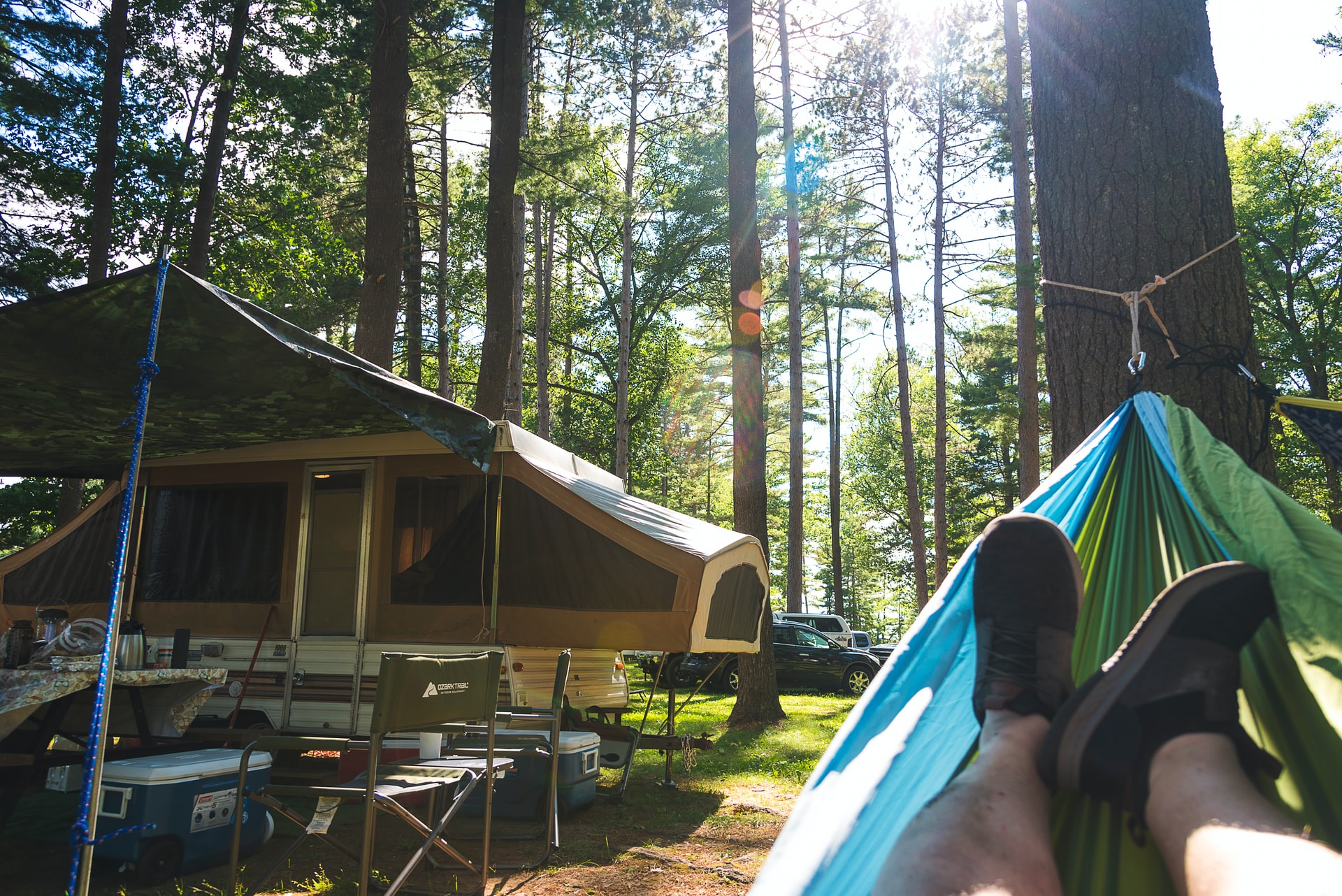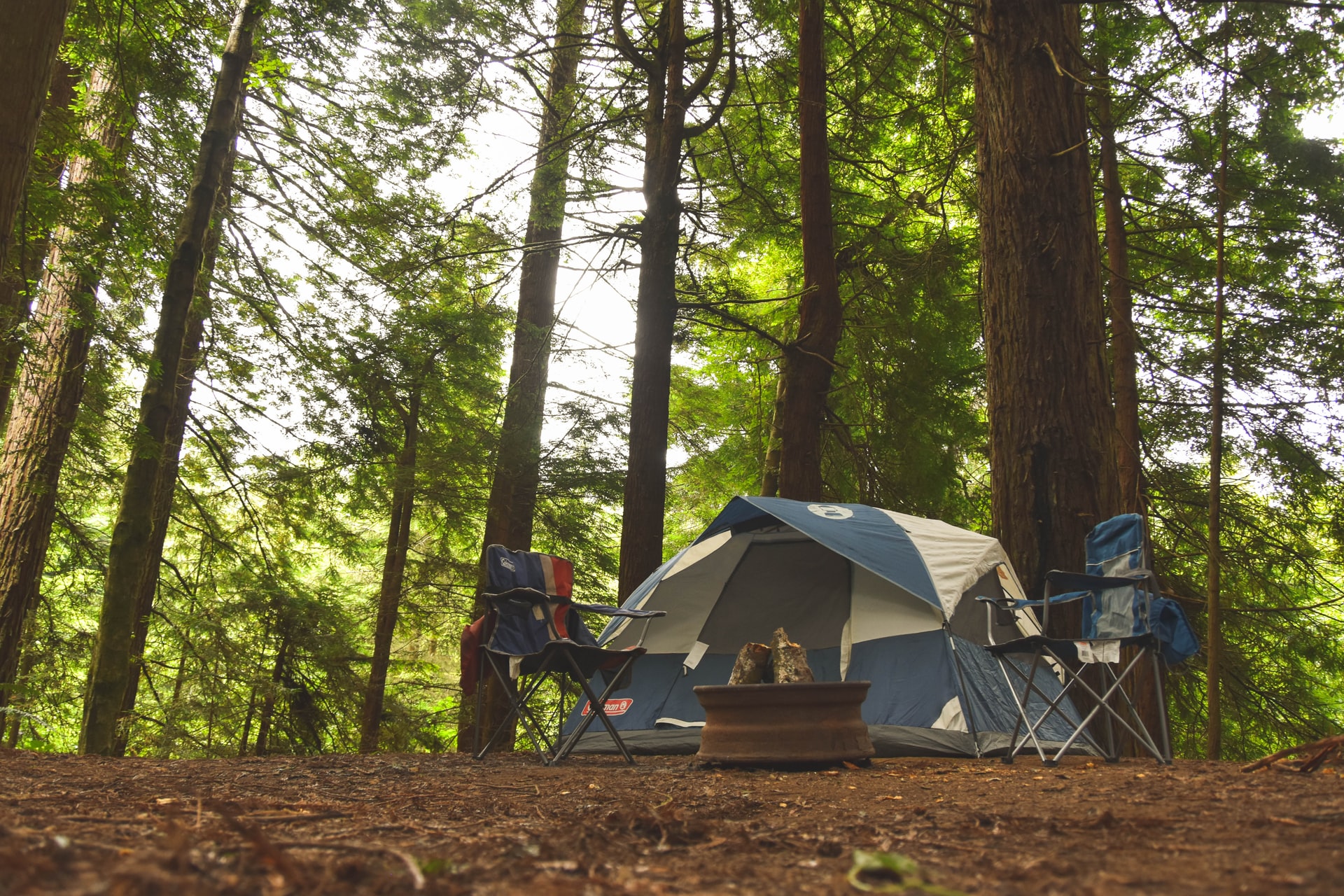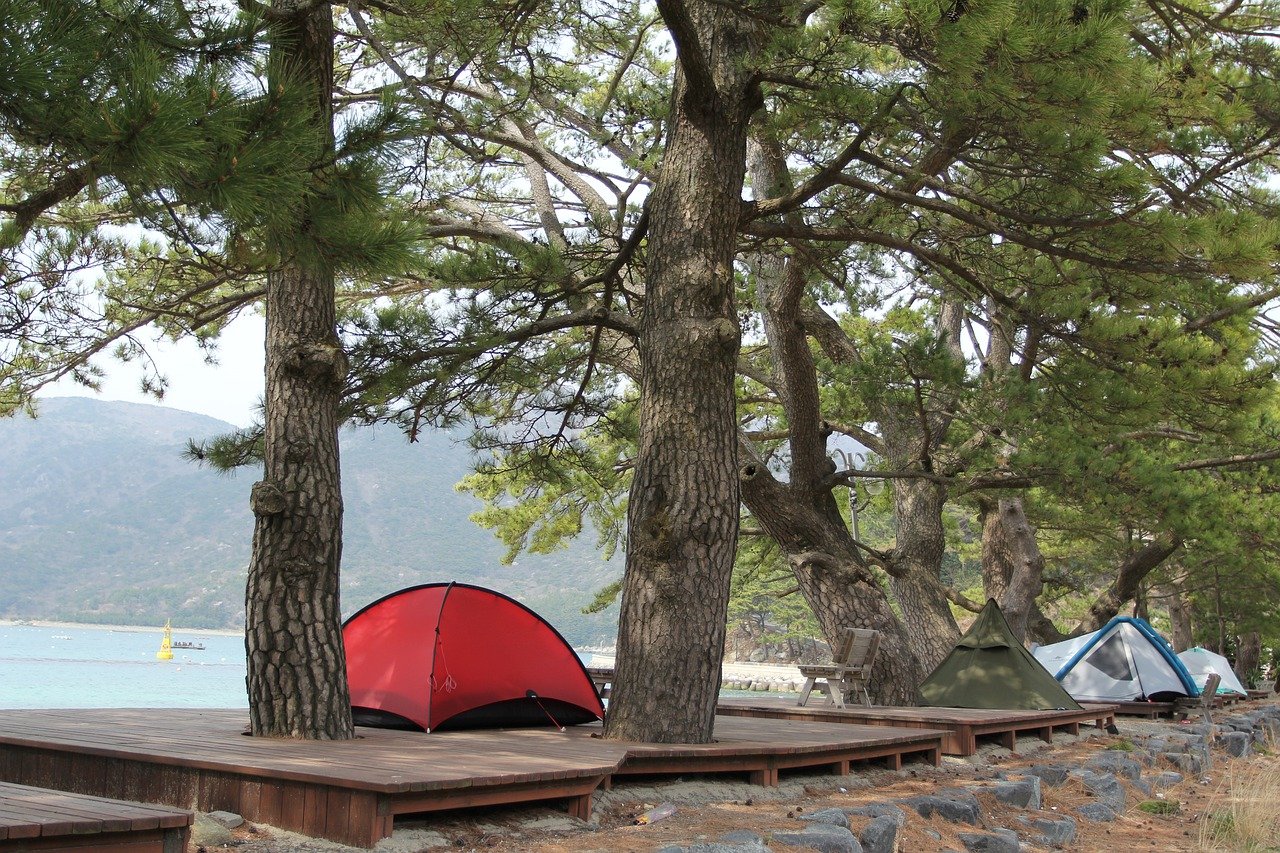After both tent camping and pop up camping for many years… which one is better?
In short, when comparing a pop-up camper vs tent camping the main difference is that a pop-up will provide you with more comfort and amenities while sacrificing the simplicity of using a tent which takes up little space and costs less.
However, there are quite a few factors to consider as well as the pros and cons of which option may be better for you based on budget, group size/comfort, setup, storage, and maintenance.
Pop Up Camper

What Is a Pop-up Camper?
A pop-up or tent trailer as some call it is a type of camper, trailer, or RV that typically features dual slideout beds, a kitchenette, stovetop, sink, and sometimes a shower and toilet. Pop-ups weigh about 1,500 to 3,000 lbs and are towed by a vehicle.
They range in length from 8 to 16 feet for the box and increases when the slideout beds are extended.
The sides are made from a thick canvas tent-like material with a hard shell top and bottom that pops up and out.
Budget
A pop-up camper cost can be as high as $10,000 to $20,000 new, or as low as $2,500 to $7,000 for a used model. This is much more expensive than what even the most high end of tents will cost.
Group Size/Comfort
Pop up campers can sleep up to 4 people comfortably with two on each slideout bed. Although, you can squeeze 5 people with one sleeping on the convertible dinette.
While 1 to 2 camping solo or as a couple is ideal for plenty of comfortable space, a family of 3 to 5 with two adults and children can work as well.
For those with larger groups of 5 or 6+, you’re better off going for either a travel trailer, RV, or 12 person tent.
Setup
The setup of a pop up camper can be more time consuming than most other camping options available. Pop-ups are a trailer that requires hitching, backing into the site, and parking. Once the trailer is in position, it’s time to manually crank the mechanisms to pop up the camper and slideout the beds.
Next, you hookup the electrical and water. If you do have sewer hookups (which most pop-ups don’t), that can be another step that takes an additional 10 to 20 minutes.
Storage/Maintenance
One major benefit to a pop-up camper when compared to other travel trailers and RVs is that they can pop down for storage. This means you could more easily park it behind a fence in your backyard.
While pop-ups can also fit inside a garage for storage, this does take up valuable real estate that could store a car or other toys. Whereas a tent folds up into a bag and maybe takes up one shelf in the garage versus an entire parking space.
The overall maintenance for a pop up camper includes checking the tires, lights, bearings, and cables. Much more work than a simple tent.
Tent

What Is a Tent?
Tents come in all shapes and sizes with a design of fabric and material that fold together to form an enclosed shelter. Tent bags include a tent, rainfly, and poles. Generally the heavier the tent, the more durable the materials. Small tents can weigh as low as 2.5 lbs with large tents going all the way up to 50 lbs.
Budget
Tent prices range from as cheap as $20 to as expensive as $1,000. The cost of a tent is based primarily on how many people it can sleep and the quality of the materials.
For those beginners in camping, tents are a fantastic choice since they’re affordable and don’t require a tow vehicle to haul it.
Group Size/Comfort
Tents come in a wide range of shapes and sizes with small tents that sleep 1 or 2 people for mountaineering, and large 12 person tents that can sleep an army.
Tents are labeled and sold based on the number of people they can sleep. For example, a 4-person tent can sleep 4 people. However, it’s important to mention that these numbers are mapped out as if you’re sleeping like sardines packed in with sleeping bags.
Generally, as a rule of thumb, you can take the number it sleeps and divide it by two. This will leave you extra room for clothing and gear on the opposite side of the tent.
The happy medium for most people is typically between the 4 to 8 person tent size. Many of these tents will give you room to stand up inside and fit larger air mattresses.
What’s also nice about tents is that you have more options to fit multiple groups on one campsite. You can pack in multiple tents where everyone has their own space. Maybe one tent for adults and one tent for the kids? However, most campgrounds do limit the number of people to one campsite.
Setup
Setup for tents involves unpacking the material and laying it out on the campsite. Then you insert the tent rods or unfold the “instant tent” design so that it pops into place. Then you place over the rain fly and stake down the corners.
You can also run an electrical cable and powerstrip into the tent.
Storage/Maintenance
Storage and maintenance of a tent are almost nonexistent when compared to a pop up camper. All you need to do is make sure that the tent fabric is dry and clean before folding it up and putting it into the storage bag. This will help to prevent any mold or mildew. After that, you place it on the shelf and you’re done.
Final Thoughts
Tents offer a great introduction to camping that has a low cost of entry. They’re relatively cheap, easy to store and set up, with little maintenance whatsoever. After some time with more trips to campgrounds, the next upgrade path is to a pop-up camper. Pop-ups have more comforts, get you off the ground, and give you better shelter from the weather (especially when it rains).
If I had to choose between the two, it really depends on how often you plan on going camping. If you’re just getting started or only plan on a couple of trips per year, tents are a great choice. If you’re looking for more comfort, or plan to book more trips, then go with a popup camper.
Both tents and pop-ups come with canvas and zippers that can wear out. If you want to avoid tents altogether, you may want to go for an a-frame pop up camper instead.

